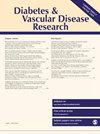基于全国健康与营养调查(2011-2020 年)的一项横断面研究,探讨氧化平衡评分与 10 年动脉粥样硬化性心血管疾病风险之间的关系
IF 3
4区 医学
Q3 ENDOCRINOLOGY & METABOLISM
引用次数: 0
摘要
背景氧化应激与动脉粥样硬化性心血管疾病(ASCVD)之间错综复杂的相互作用是一个重要的研究领域,因为氧化平衡在调节 ASCVD 风险方面具有潜在的作用。本研究旨在调查氧化平衡评分(OBS)与10年ASCVD风险之间的关系,以深入了解氧化平衡如何影响心血管健康。方法这项横断面研究分析了美国国家健康与营养调查(NHANES)2011-2020年的数据(40-79岁年龄组),探讨OBS与10年ASCVD风险之间的联系。OBS对饮食和生活方式因素进行了分类。多变量逻辑回归对年龄、性别、种族和人口统计学因素进行了控制。对 4955 名参与者的分析表明,OBS 与 10 年 ASCVD 风险之间存在负相关。连续 OBS 调整 OR:0.97(95% CI:0.95∼0.99,p < .001)。四分位分析显示,与第一季度相比,第二季度的风险降低了 0.88(95% CI:0.63∼1.22,p = .43),第三季度降低了 0.92(95% CI:0.66∼1.28,p = .614),第四季度降低了 0.59(95% CI:0.42∼0.83,p = .002)。四分位数分析表明,OBS 四分位数越高,风险越低。生活方式OBS和饮食OBS显示出相似的趋势。分层分析显示,种族和高血压是影响调节因子(p < .05)。然而,不能因此推断两者之间存在因果关系,今后还需要进行更广泛的临床和基础研究来深入探讨这种关联。本文章由计算机程序翻译,如有差异,请以英文原文为准。
A cross-sectional study exploring the relationship between oxidative balance score and 10-year atherosclerotic cardiovascular disease risk based on the National Health and Nutrition Examination Survey (2011–2020)
BackgroundThe intricate interaction between oxidative stress and atherosclerotic cardiovascular disease (ASCVD) is an essential area of research because of the potential role of oxidative homeostasis in regulating ASCVD risk. This study aimed to investigate the relationship between the oxidative balance score (OBS) and the 10-years risk of ASCVD to gain insight into how oxidative balance affects cardiovascular health.MethodsThis cross-sectional study analyzed National Health and Nutrition Examination Survey (NHANES) 2011–2020 data (40–79 age group), exploring OBS’s link to 10-years ASCVD risk. OBS categorized dietary and lifestyle factors. Multivariate logistic regression controlled for age, sex, race, and demographics. A restricted cubic spline examined linear relationships; robustness was ensured through subgroup analyses.ResultsAnalysis of 4955 participants reveals a negative association between OBS and 10-years ASCVD risk. Continuous OBS adjusted OR: 0.97 (95% CI: 0.95∼0.99, p < .001). Quartile analysis shows reduced risk in Q2 0.88 (95% CI: 0.63∼1.22, p = .43), Q3 0.92 (95% CI: 0.66∼1.28, p = .614), and Q4 0.59 (95% CI: 0.42∼0.83, p = .002) compare Q1. Quartile analysis indicated decreasing risk in higher OBS quartiles. Lifestyle OBS and Dietary OBS demonstrated similar trends. Stratified analyses highlight race and hypertension as effect modifiers ( p < .05).ConclusionOur study suggests an association between higher OBS and a reduced 10-years ASCVD risk. However, causation should not be inferred, and in the future, more extensive clinical and fundamental research is required to delve deeper into this association.
求助全文
通过发布文献求助,成功后即可免费获取论文全文。
去求助
来源期刊

Diabetes & Vascular Disease Research
ENDOCRINOLOGY & METABOLISM-PERIPHERAL VASCULAR DISEASE
CiteScore
4.40
自引率
0.00%
发文量
33
审稿时长
>12 weeks
期刊介绍:
Diabetes & Vascular Disease Research is the first international peer-reviewed journal to unite diabetes and vascular disease in a single title. The journal publishes original papers, research letters and reviews. This journal is a member of the Committee on Publication Ethics (COPE)
 求助内容:
求助内容: 应助结果提醒方式:
应助结果提醒方式:


